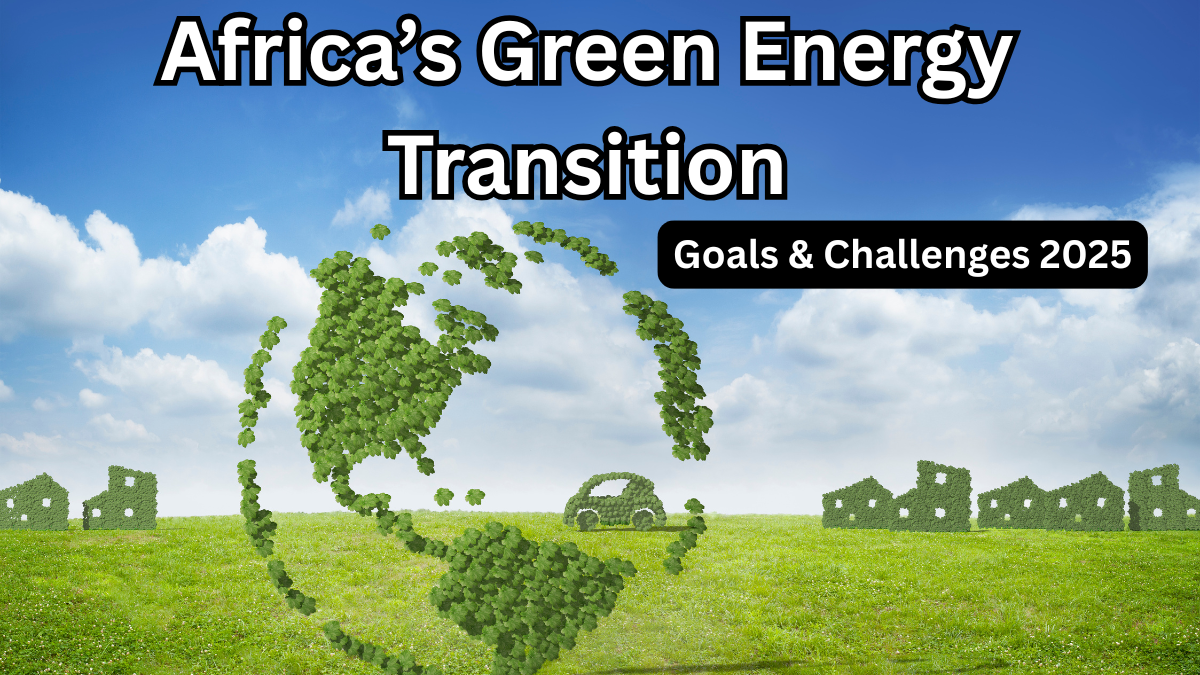Africa is on the cusp of a major transformation – one driven by Africa green energy initiatives and an ambitious renewable transition. As the continent faces rising energy demands and the need for sustainable growth, 2025 is shaping up to be a pivotal year for driving clean energy adoption.

Why Africa’s Green Energy Transition Matters
Africa has abundant natural resources – from vast solar potential to strong wind corridors and untapped hydropower sources. Yet, millions still lack access to electricity. Transitioning to green energy isn’t just an environmental move; it’s a pathway to:
-
Energy accessibility for rural and underserved communities
-
Economic growth through investment in renewable industries
-
Climate resilience by reducing dependency on fossil fuels
In short, Africa green energy is about powering progress while safeguarding the future.
Key Goals of the Renewable Transition in 2025
African nations are setting ambitious targets for 2025, focusing on sustainable growth and energy inclusion.
| Goal | Target by 2025 |
|---|---|
| Renewable energy share | 30–35% of total energy mix |
| Electrification | 70% of households to gain access |
| Investment in renewables | $60–70 billion in projects |
| Job creation | 5–7 million green energy jobs |
These goals aim to fast-track the renewable transition, fostering innovation and partnerships across the continent.
Major Challenges in Achieving Green Energy Goals
Despite the opportunities, the road to a sustainable Africa green energy future isn’t without hurdles:
-
Funding gaps: Many projects rely heavily on international financing.
-
Infrastructure limitations: Outdated grids make large-scale renewable integration difficult.
-
Policy inconsistencies: Lack of unified regulatory frameworks slows progress.
-
Skill shortages: There’s an urgent need for trained professionals in renewable technologies.
Steps Toward Overcoming These Challenges
To achieve a smooth renewable transition, African nations are:
-
Encouraging public-private partnerships for project funding
-
Investing in modern grid infrastructure to support renewable integration
-
Implementing supportive policies to attract foreign and local investors
-
Focusing on capacity building to train local talent in green energy technologies
The Road Ahead
2025 is a critical year for Africa. With bold strategies, international collaboration, and a strong push toward Africa green energy, the continent can redefine its energy landscape — building a future that is sustainable, inclusive, and resilient.
FAQs
Why is Africa focusing on green energy in 2025?
Because it ensures sustainable growth, improves energy access, and reduces carbon emissions while addressing the continent’s growing power needs.
What are the main sources of Africa green energy?
Solar, wind, hydropower, and geothermal energy form the backbone of Africa’s renewable transition.
What role does international investment play?
Foreign funding supports large-scale renewable projects, infrastructure development, and technology transfer essential for this transition.
How does the green energy transition create jobs?
By boosting industries such as solar installation, wind farm construction, and renewable tech manufacturing, millions of new employment opportunities are being created.
Click here to learn more
Sachin is a dedicated writer specializing in education, career, and recruitment topics, delivering clear and actionable insights to empower readers.
